Search results for: 'Ancient glass'
-
 Roman intaglio with cow
Roman intaglio with cowRoman jewellery insert made of transparent orange glass paste with a white band. The motif is a cow. From the Professor Brosch collection of engraved gems.
Price: on request Roman intaglio with birds at water basin
Roman intaglio with birds at water basinThe Roman glass paste shows an interesting scene with a water basin, birds and column.
Price: on request Roman intaglio with cow
Roman intaglio with cowRoman jewellery insert made of transparent orange glass paste. The motif is a cow. From the Professor Brosch collection of engraved gems.
Price: on request Roman intaglio with horse
Roman intaglio with horseRoman jewellery insert made of transparent orange glass paste with a white bands. The motif is a horse. From the Professor Brosch collection of engraved gems.
Price: on request Roman intaglio with griffin
Roman intaglio with griffinThe Roman decorative insert made of orange glass paste shows a mythical creature with a horse's body and an eagle's head, leaning on its front paws.
Price: on request Dark Roman glass paste with white band
Dark Roman glass paste with white bandThe Roman ring insert is in excellent condition. The small-format motif is not clearly identifiable, but it may show a head.
Price: on request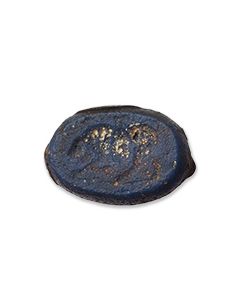 Roman intaglio with cow
Roman intaglio with cowRoman jewellery insert made of opaque blue glass paste. The motif is a cow. From the Professor Brosch collection of engraved gems.
Price: on request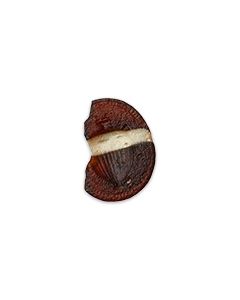 Roman intaglio with vase
Roman intaglio with vaseThe Roman ring insert is made of beautiful dark purple glass paste with a white band. It shows a bulbous vase with taeniae.
Price: on request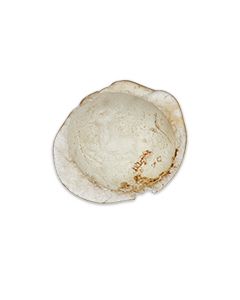 Roman intaglio with bull
Roman intaglio with bullThe Roman ring insert is made of colourless glass paste that imitates rock crystal. It depicts a jumping bull.
Price: on request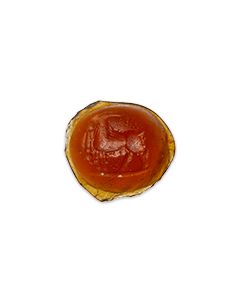 Roman intaglio with billy goat
Roman intaglio with billy goatThe Roman ring insert is made of orange glass paste that imitates carnelian. It depicts a horned quadruped.
Price: on request Group of ancient eye beads
Group of ancient eye beads10 magnificent polychrome glass beads with stylized eyes as protection against the evil eye. Made around the mid 1st millennium BC in the eastern Mediterranean. Ex Christie's.
€2,100 Roman glass juglet
Roman glass jugletThe small jug with a pear-shaped body is outstanding due to the strongly iridescent patina and the dark coating on the outside. From the Late Roman Imperial period.
Price: on request Late Roman glass flask
Late Roman glass flaskFlat bottle with double handle from the Eastern Mediterranean. Made between the 3rd and 6th century.
Price: on request Roman bronze theater mask with eye inlays
Roman bronze theater mask with eye inlaysImpressive massive piece with great dark patina. Coming with an Art Loss certificate.
Price: on request Roman sprinkler
Roman sprinklerPerfume bottle with pattern-blown body. An aperture made it easy to dispense the precious content drop by drop. Made in the Roman province Syria in the 3rd cent. AD.
Price: on request Roman sprinkler
Roman sprinklerPerfume bottle with pattern-blown body. An aperture made it easy to dispense the precious content drop by drop. From the Late Roman period.
Price: on request Roman glass bowl
Roman glass bowlDelicate bowl dating to the 3rd to 4th century AD. Perfect condition. From the professor Ritschel collection.
Price: on request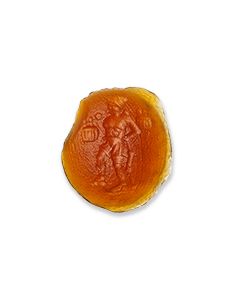 Roman intaglio with Odysseus as a beggar
Roman intaglio with Odysseus as a beggarThe roman intaglio shows an important scene from the Odyssey in which Odysseus returns home after his long journey. The hero is disguised as a beggar. He wears his pilos hat and is resting his weight on a stick.
Price: on request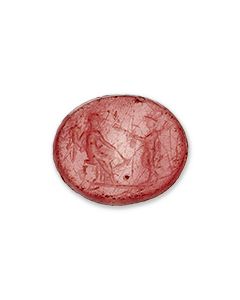 Roman intaglio with Hermes and Tyche
Roman intaglio with Hermes and TycheThe ancient intaglio from Roman times shows a scene between the two gods. From the Professor Brosch collection of engraved gems.
Price: on request Two mosaic glass beads
Two mosaic glass beadsNicely decorated miniature works of art. Outstanding examples for mosaic glass beads from the early Roman Imperial period.
€1,240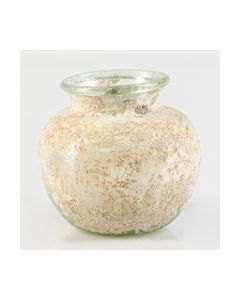 Spherical roman glass jar
Spherical roman glass jarThe small glass from Roman Imperial times is a jar or beaker. From the professor Ritschel collection.
Price: on request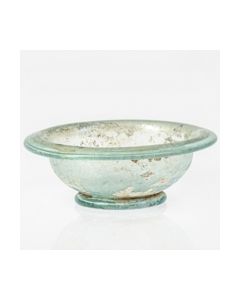 Roman glass bowl
Roman glass bowlThe nice bowl is made of pale blue green glass. It dates to the late Roman Imperial period.
Price: on request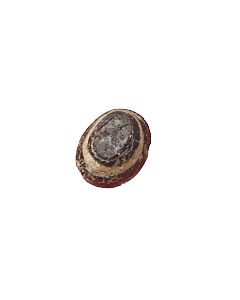 Roman glass insert for a fingerring
Roman glass insert for a fingerringBanded glass imitating natural agate. The piece was once inserted into jewellery from the Roman Imperial period.
Price: on request Sidonian perfume bottle
Sidonian perfume bottleGlass from Sidon with a decorative relief of amphorae and other vessels. A phoenician production from the 1st century AD.
Price: on request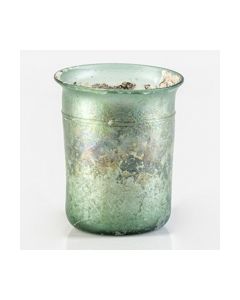 Roman glass beaker
Roman glass beakerGlass ware dating to Roman Imperial times. Great condition. A production of the Eastern provinces, possibly from Western Anatolia.
Price: on request Early Islamic glass with spiral thread
Early Islamic glass with spiral threadA marvelous example for Early Islamic glass after the conquest of the Levant, during Umayyad rule. A glass from the professor Ritschel collection.
Price: on request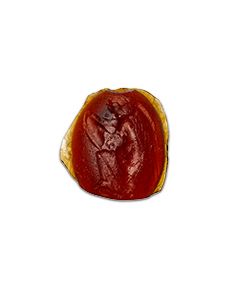 Roman intaglio with goddess of victory
Roman intaglio with goddess of victoryThe glass paste features a famous depiction of Victoria writing the names of victors in battle on a large shield. The motif reiterates a 1st century bronze statue.
Price: on request Roman intaglio with goddess of victory
Roman intaglio with goddess of victoryThe glass paste features Victoria writing the names of victors in battle on a large shield.
Price: on request Elegant Roman glass bottle
Elegant Roman glass bottleAncient glass with magnificent colourful iridescence. Found in a ship wreck in the eastern Mediterranean. Produced in Roman imperial times.
Price: on request Roman glass cup
Roman glass cupGlass vessel dating to the 1st century AD. Beautiful iridescent patina. From the professor Ritschel collection.
Price: on request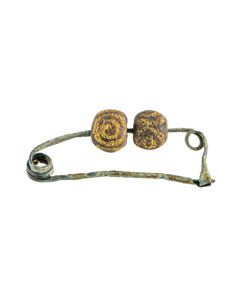 Early Italic brooch decorated with beads
Early Italic brooch decorated with beadsThere rare brooch type from northern Italy is based on predecessors from Greece. The piece is from the famous Richard Hattatt collection and is published in two of his works.
Price: on request Roman glass pitcher
Roman glass pitcherTurquoise glass jug from the late Roman Imperial period. From the Heckmann collection.
Price: on request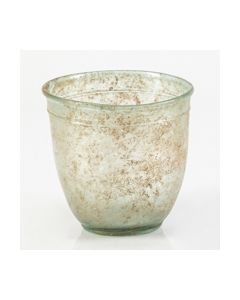 Roman glass beaker
Roman glass beakerElegant glass dating to Roman Imperial times. Nice pale green glass. From the professor Ritschel collection.
Price: on request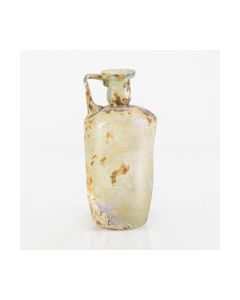 Roman glass bottle with handle
Roman glass bottle with handleThe cylindrical vessel has a nice iridescent patina. It was made in the Roman Imperial period.
Price: on request Roman glass bowl
Roman glass bowlSmall bowl dating to the 2nd to 4th century AD. Perfect condition. From the professor Ritschel collection.
Price: on request Roman intaglio with the Spartan Othryades
Roman intaglio with the Spartan OthryadesThe glass paste depicts a scene from the battle of the 300. Othryades declares the victory of Sparta. He writes it on the shield of a slain enemy with blood from his own wounds.
Price: on request

